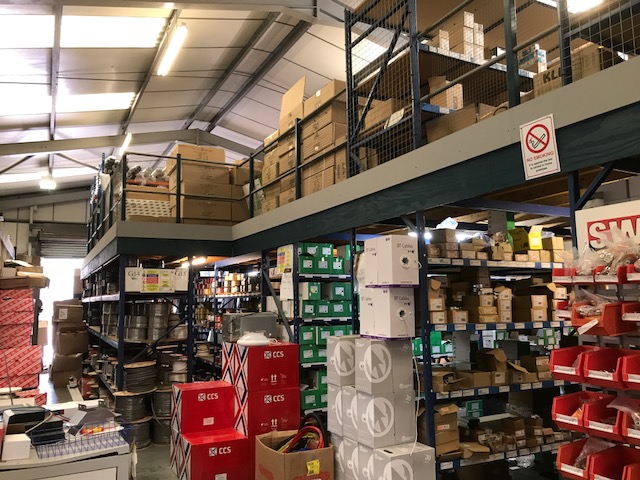The Upper Tribunal (Lands Chamber) decision in Wilkinson (VO) v Edmundson Electrical Ltd (2017) UKUT 0390 (LC) considered whether chipboard decking, supported by timber joists resting on non-rateable Dexion racking, and steel staircases giving access to the decking, were rateable as part of a warehouse hereditament in Stoke on Trent. The Valuation Tribunal for England had found that these items were not rateable and should not be valued as part of the warehouse in which they were situated. The Valuation Officer had appealed to the Upper Tribunal against that decision.
The Appellant Valuation Officer argued that the decking and staircases should be treated as part of the premises and valued as such or, in the alternative, that they were rateable items of plant and machinery, falling under the description of “walkways” or “platforms” with Table 3 of Class 4 of the Valuation for Rating (Plant and Machinery) Regulations 2000 (the Plant and Machinery Order). The Valuation Officer accepted that the storage racking, which supported the decking, was not rateable, but contended that did not mean that it was assumed that the racking was not there. The decking and the staircases formed part of the “setting” within which the ratepayer carried on its business, rather than forming part of the apparatus or plant with which it did so. The nature of the decking and its permanence meant that it formed part of the property to be valued.
The Appellant also contended that, whilst racking used purely for storage purposes was not rateable because it was not an item named in the Plant and Machinery Order, it became rateable when used to support items which were themselves rateable, such as walkways and staircases.
The Respondent ratepayer contended that the decking was not used for storage in its own right, it was used only to provide access to the higher level shelving. The racking was acknowledged by the Valuation Officer not to be rateable and the Valuation Officer could not “have it both ways” by accepting that the racking was not rateable for storage use, but became rateable as a support for other items.
The Tribunal accepted that it can sometimes be difficult to determine whether or not a particular structure forms part of the premises within which a business is carried on or forms part of the plant used to carry on the business. This would be a matter to be determined in the light of the facts in each case and it would be difficult to provide general guidance based on the particular facts of this case. The question to be asked was whether the decking and staircases, properly viewed, forms part of the hereditament in which the ratepayer carried on its business, or part of the plant with which it does so. In this case, the Tribunal was clear that the decking formed part of the ratepayers plant, not part of the hereditament. This was an inevitable consequence of the fact that the Dexion racking, on which the decking was laid, was itself plant and was not rateable. As the racking itself was not rateable, it was therefore not to be taken into account in valuation, Because of this, the decking which was supported on the racking, and which could not exist without the racking, must also be assumed not to be present. Because that was the case there was no need to consider questions such as the method of fixing, or the permanence of the decking itself.
The Tribunal considered that the Appellant’s alternative suggestion, that the decking and staircases were rateable items under the Plant and Machinery Order, failed on both the facts and on the assumptions required in the Order. Factually, the decking was an adaptation of the racking system, rather than an independent item of plant, and the requirement to attribute no value to the non-rateable racking meant that the same was true of the decking.
Whilst the value at stake in this case was relatively low (only about £750 in terms of rateable value), and whilst the decision is founded very firmly in its own facts, the Tribunal’s findings about the treatment of items of plant that are not rateable is an important one. The decking and staircases here were adaptations of, and supported by, a racking system that was not rateable and was assumed to have no effect on value. As a consequence, the decking and staircases could not become part of the hereditament and were not rateable.

